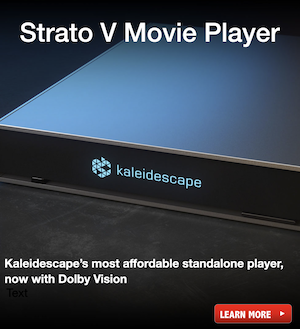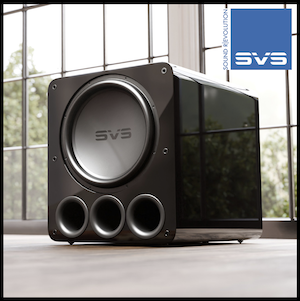(September 3, 2024) On the heels of its latest entry-level video processor announcement, the Radiance Pro 4140, Lumagen is once again topping CEDIA 2024 headlines by throwing down a thunderous digital fist. For the first time in the company's Illustrius existence, it's going the way of 8K with the reveal of the all-new flagship ArtisaN 8K Video Processor. Designed with filmmakers and cinema purists in mind, the ArtisaN is crafted to preserve the all-important "director's intent" with uncompromising precision, bringing high-level, future-facing functionality and performance into Lumagen's impressive stable of processor models.
Jim Peterson, Lumagen’s president, describes the ArtisaN as a meticulously crafted piece of technology that merges bespoke hardware, software, and video processing algorithms with the highest-quality 8K HDMI chips and Field Programmable Gate Array (FPGA) technology. “This all comes together to deliver the best in-motion video, complementing the artistic craft of the filmmaker, delivering the best home cinema experience,” says Peterson.
Supporting both 8K60 and 4K120 inputs and outputs while offering compatibility with Dolby LLDV sources, the ArtisaN represents a significant evolution of Lumagen’s acclaimed Radiance Pro series. It not only incorporates all the cutting-edge features of its predecessors but also introduces new capabilities, such as direct control of Seymour-Screen Excellence’s masking systems, making it a versatile tool for any high-end home cinema setup.
Peterson emphasizes ArtisaN’s prowess in Dynamic Tone Mapping (DTM), a feature that Lumagen has continually refined to stay ahead of the competition. This sophisticated technology analyzes multiple regions of each frame, optimizing every image with extreme levels of accuracy. Movie producer Jon Thompson, responsible for post-production image quality at a major studio, has praised Lumagen’s DTM, stating, “the other DTM options used today are not even in the same league as the Lumagen.”
With the rise of 8K displays, the ArtisaN also brings superior scaling capabilities to the forefront, building upon the Radiance Pro’s highly-regarded performance. Lumagen’s proprietary scaling algorithms are designed to ensure that all content, from 4K to standard definition, is precisely upscaled to 8K. The ArtisaN also features an edge-sharpening function, which restores details lost during digital compression, ensuring that every image is as sharp and detailed as possible.
While video-focused, audio performance hasn't been overlooked in the ArtisaN. By reducing HDMI output clock jitter, the processor minimizes distortion at the DACs, resulting in significantly improved audio quality, a crucial consideration for home theater enthusiasts seeking the best possible sound.
Thanks to its onboard FPGA technology, the ArtisaN has also been injected with an appealing level of future adaptability. This technology allows for hardware image processing and setup features to be added years after installation, keeping ArtisaN at the cutting edge of home cinema technology, even as standards evolve.
Manufactured in the USA and tagged with an aggressive starting price of $12,995 (MSRP), cinephiles and home theater fans will need to patiently wait for its official launch; as of now, Lumagen says ArtisaN will begin shipping in 2025. The wait will be worth it, though, as Lumagen will extend a "generous trade-in program" for current Radiance Pro owners.
Lumagen’s groundbreaking video processing technology can be experienced firsthand at the 2024 CEDIA Expo in Seymour-Screen Excellence’s Sound Room 4 and Booth 4409, as well as the Harman Booth 2512. For more information on the ArtisaN, visit Lumagen’s website or contact Jim Peterson directly at 503.574.2211.
Last edited:










